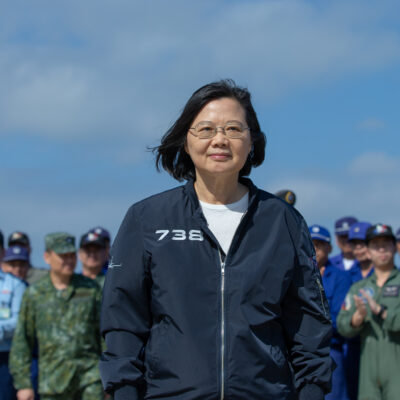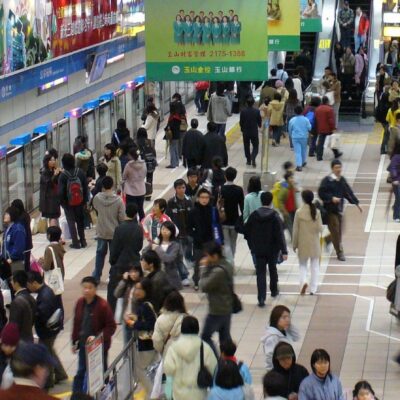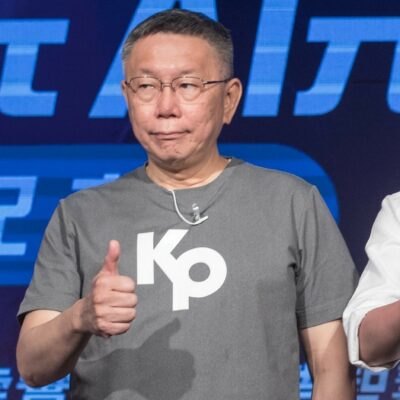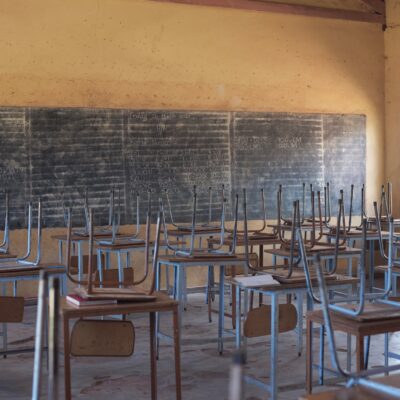The ideal of a liberal democratic political system is that its institutions should broadly reflect the make-up of the governed society. For a multicultural and migrant country such as Australia, this means that its elected legislatures should contain public representatives from a variety of backgrounds, commensurate to their numbers within the population.
However, one noticeable feature of Australia’s parliaments is the conspicuous lack of Asian-Australians. Here, Australia compares unfavourably to other multicultural parliamentary democracies such as Canada, New Zealand, and the United Kingdom. Although Asian-Australians have gained a presence in Australia’s parliaments, they remain very under-represented. This poses the question as to whether Australia’s political parties, legislatures, political cultures and norms have the ability to accommodate the country’s changing demographics.
At the most recent federal election in 2019 only three candidates with Asian ancestry were elected to the 151-seat House of Representatives, where government is formed. These three members of parliament make up just two percent of the chamber; while at the 2016 Census, people claiming full or partial Asian ancestry (East Asian, Southeast Asian, South Asian and Central Asian) comprised around 16 percent of the total Australian population. Of course, a perfect symmetry between population and representation may never be achieved given the limited number of seats in the parliament and the fierce competition to secure them, both within parties and between them. However, it is the avenues of opportunity within the country’s political institutions for people from backgrounds outside the dominant culture that demonstrates the system’s health.
It could be argued that politicians should represent the interests of their electorate in a broad manner, eschewing any allegiance to one particular ethnic group. However, minority groups have very specific concerns and interests within the broader culture, and this requires public representatives who have a substantive understanding of these concerns and interests—an attribute that could only come from being a member of these groups. This form of public representation can also be seen as an indication that the country’s political institutions are giving weight to issues that affect minority communities.
The indirect pathways to Australian citizenship have a significant effect
Australia’s migration program underwent a notable shift in the mid-1990s that has proved consequential to the ability of migrants to not just become citizens—an obvious criteria for election to parliament—but to also become civically engaged. Responding to increased global competition for highly skilled migrants, Australia realigned its migration program to place less emphasis on attracting permanent settlers, who often had familial links, towards a dominant framework of numerous temporary visas that give businesses the flexibility to quickly obtain the skills they require. Asia quickly became a critical source of skilled migrants.
This system has created a culture where migrants often bounce between different temporary visa categories before they can qualify for permanent residency and then finally gain citizenship. This phenomenon of indirect migration is distinct from previous approaches to migration—like the post-World War II population drive—that came with an expectation of a greater investment by migrants in the country’s civic structures. Due to the considerable timeframes and bureaucratic hurdles the temporary migration program creates, these pathways often have a detrimental effect on people’s civic engagement and sense of belonging within Australian society, and subsequent ability to engage with political institutions. Without certainty about one’s longevity in Australia, seeking political office can often not seem feasible. The immigration program’s emphasis on temporary migration has had the effect of Australia gaining labour, knowledge, and taxes from migrants, but inhibiting their ability to become politically enfranchised.
Party processes
The central process to becoming a public representative is gaining pre-selection for a political party. Candidates have to go through the mechanics of party procedures, which can often be a laborious and difficult exercise, requiring time to dedicate to the party, knowledge of its mechanics, gaining senior allies within the party, as well as holding considerable social capital within the local community. These are all features that more well-established communities will find easier to negotiate.
However, political parties do have the opportunity to demonstrate leadership on the importance of substantive representation for minority communities. This is particularly the case in Australia’s upper houses where voters mostly vote for a party list, rather than for an individual candidate. Parties can make the decision to place members of a minority community in high positions on their party lists in order to help their chances of election. Yet at the 2019 federal election only two Asia-Australians were given ‘winnable’ spots on their party tickets in the Senate: the Labor Party’s Penny Wong, and The Greens’ Mehreen Faruqi.
If political parties are unwilling to demonstrate leadership on minority representation, then it is instead the blunt self-interest of parties that will enable candidates from ethnically diverse backgrounds to emerge.
Demographic change and political opportunities
Over the past several decades, two groups have become more pronounced within Australia’s overall demographic shifts: Chinese and Indian Australians. This increased demographic weight brings potential political opportunities, with the most obvious path to gaining pre-selection coming within electorates that have significant concentrations of Chinese and Indian communities. Two recent elections, the 2019 federal election, and the 2018 Victorian election, indicated that these pathways toward public representation are opening up for these two groups, albeit in limited ways.
In the House of Representatives there are very few electorates that have large enough concentrations of specific ethnicities to entice political parties to select ethnic minority candidates. However, one notable exception is the seat of Chisholm in Melbourne’s south-east, which has both a large pan-ethnic population—with just over 50 percent of the seat foreign-born—as well as a specifically ethnic Chinese population of close to 20 percent. Responding to this reality, at the 2019 federal election both the Liberal Party and the Labor Party ran Chinese-Australian candidates, guaranteeing that Chisholm’s public representative would be a Chinese-Australian. The seat was narrowly won by the Liberal Party’s Gladys Liu.
Although Liu arrived in Australia from Hong Kong in 1985, before the shift in the immigration program towards temporary migration, her trajectory towards becoming a parliamentarian may indicate the length of time and dedication to the cause that migrant communities face to gain the trust of political parties. Liu gained citizenship in 1992. She joined the Liberal Party in 2003, becoming highly active in the Victorian branch’s party mechanics. She served on the Administrative Committee, chaired the branch’s Communities Engagement Committee, and founded both the Chinese Liberals Association and the party’s Multicultural Branch for Melbourne’s eastern suburbs. Liu was subsequently given ‘unwinnable’ spots on the party’s Victorian Legislative Council list for the state elections in 2006, 2010, and 2014, before finally gaining pre-selection and winning the federal electorate of Chisholm in 2019.
A notable barrier for Chinese-Australians wishing to become politically active are concerns—often unsubstantiated—about national security. This became an issue for Liu after her election to parliament due her previous involvement with an organisation that has links to the Chinese Communist Party (CCP). Liu has stated that she left the group in 2016, and there is no evidence of her behaviour being untoward. Pierre Yang, a member of the Western Australian Legislative Council, also faced similar concerns. As the CCP actively seeks to influence diaspora groups, and its operations inside such groups are opaque, it makes involvement in diaspora groups for Chinese Australians problematic. This has the unfair effect of limiting the ability of Chinese Australians to both organise effectively as well as be deemed trusted as political representatives.
At the 2018 Victorian state election another pathway to Asian-Australian public representation opened up, this time for the Labor Party’s Kaushaliya Vaghela. Victoria’s upper house offers the unique opportunity for political parties to combine leadership on substantive representation for minority communities through high placement on their party lists, with a geographic specificity that can take advantage of minority ethnic concentration. The pan-ethnic (and rapidly growing Indian) demographics of the Legislative Council’s Western Metropolitan region was deemed advantageous for Labor to place an Indian Australian in a ‘winnable’ position on their party list.
Vaghela’s ascension to becoming a public representative is compelling because she was directly motivated by the interests of the Indian Australian community that she felt the need to advance. This is in stark contrast to non-minority groups that tend to see politics as a career path. Vaghela came to Australia in 1998 to study for a Master of Applied Science at RMIT University. As is now common, she subsequently transferred to a temporary work visa to then permanent residency, securing a position as a cancer researcher at Monash University. During this time her husband opened a small business in the Little India precinct of the Melbourne suburb of Dandenong, and Vaghela took the lead in representing the interests of the traders in the area. This brought her into contact with a think tank called the South Asian Public Affairs Council and a community group called the Subcontinent Friends of Labor, which eventually led to her joining the Labor Party.
However, the Little India precinct in Dandenong lies within the South-East Metropolitan region of the Legislative Council, a region that Labor’s demographic calculations saw necessary to run a Vietnamese-Australian, Tien Kieu, in a ‘winnable’ position on its party ticket. Vaghela was instead placed as a candidate for the Western Metropolitan region, where recent Indian migration has become concentrated. She subsequently became the first Indian-born Hindu to be elected to any parliament in Australia. In her maiden speech to the Legislative Council, she noted that ‘[w]hen we were fighting for Little India traders we realised the need for an Indian representative in the Victorian Parliament who would truly understand our issues.’
Migrants like Vaghela who have come to Australia after the mid-1990s immigration shift may face participatory barriers due to the nature of their indirect process towards citizenship, but they also have certain advantages due to their high level of educational attainment and crucial skill sets. This allows them to quickly grasp issues of importance to their community and use their skills to seek remedies. When political parties see an advantage in this combination of community knowledge and high skill sets then there is substantial self-interest in offering Asian-Australians opportunities to become public representatives.
However, federally there remains a pronounced political culture built around what Geoffrey Brahm Levey from the University of New South Wales has argued is a ‘a certain foundational status’ for Anglo-Australia. This perspective requires the country’s primary political institution to be reflective of a particular type of Australian, rather than be reflective of the country’s true demographics. Yet as demographic changes start to influence party political calculations—such as in Chisholm—this deference to Anglo-Australia will come under increased pressure.
Several generations are often needed among refugee communities
Recent state elections in Victoria and New South Wales have seen the election of individuals whose backgrounds are as Indo-Chinese refugees in the late-1970s and early-1980s. Alongside Tien Kieu in Victoria’s Legislative Council who arrived in Australia as a 20-year old, Meng Heang Tak arrived as a 16-year old from Cambodia and was elected to Victoria’s Legislative Assembly in 2018. In New South Wales, Anoulack Chanthivong, who arrived in Australia as a six-year old from Laos, was elected to that State’s Legislative Assembly in 2015. While Kieu and Tak’s electoral districts contain significant numbers of people from South-East Asia, Chanthivong sits outside this trend of political parties aligning their candidates to demographic concentrations.
The elections of Kieu and Tak—having arrived in Australia at ages of some maturity where barriers to adjustment would be higher—can be understood as communities from refugee backgrounds taking several decades to gather the resources necessary to become politically active and viable. This involves not just personal skills, as Kieu holds a PhD in physics, but cumulative community resources. Refugees obviously encounter barriers that skilled migrants do not, with many never being afforded the ability to acquire the education, skills and often wealth necessary for public advocacy. The political power of refugee groups is not simply tied to individual success, but to a collective accumulation of civic capacity—often a generational task.
It is problematic that education remains the primary path to public representation for Asian-Australians, because communities who may require the most access to the country’s civic structures face hurdles that through no fault of their own, they are unable to clear. Or, as is the case with Indo-Chinese refugees, may take three to four decades to overcome as they build their collective civic capacity.
However, for migrants who have arrived in Australia after the mid-1990s shift in the immigration program, education is often built into their migration pathway, which affords them greater political opportunities, even with the insecure routes they have to negotiate to gaining citizenship and a sense of national belonging.
The Western Australian Legislative Assembly’s Shahyaz Yezdi ‘Yaz’ Mubarakai, came to Australia in the late-1990s to study for a Master’s degree. Mubarakai is a Parsi, a small, ethnically distinct, and insular community in India. There is not a Parsi community in Australia of any demographic weight, but Parsis are traditionally part of India’s educated and Anglophone elite, with considerable economic power in Mumbai, despite their small numbers, making Mubarakai’s ability to integrate himself to Australia’s dominant cultural norms relatively easier.
Bi-cultural advantages
Australia’s ‘modest multiculturalism’ recognises the value of cultural diversity, yet also contains a certain expectation that migrants will adjust to the ‘foundational status’ of the broader Anglo-Australian civic culture. Therefore, individuals who arrived in Australia early in their lives, or indeed have only ever lived in Australia and maintain their ancestral links through language and culture while also being comfortable within Anglo-Australian norms, can have distinct advantages as public representatives. After their defeat at the 2020 Australian Capital Territory (ACT) election, the Canberra Liberals selected Elizabeth Lee as their new leader. Lee arrived in Australia as a seven-year-old from South Korea and can be seen as someone who embodies this bi-culturalism. She is now the first Asian-Australian to become a leader of the opposition in an Australian parliament.
Lee’s ascension to the leadership of a major political party is important because of the small numbers of Korean-Australians who live in the ACT. The Canberra Liberals haven’t, therefore, responded to a specific demographic situation such as in Chisholm with Gladys Liu and Victoria’s Western Metropolitan Region with Kaushaliya Vaghela. They’ve instead chosen a leader based solely on her credentials for the position—an important symbol of social inclusion.
Of course, this should not be seen as an either/or proposition by political parties. Liu and Vaghela both serve important roles as advocates for Australia’s two fastest growing migrant communities as well as being highly accomplished individuals whose election should be deemed as meritorious in their own regard. Australia’s political parties need to be attuned to the concerns and interests of Asian-Australian communities, but they should also see that potential Asian-Australian candidates hold greater value than just the knowledge, connections, and votes they bring from their respective communities.
The health of Australia’s political institutions requires more than an ambivalent response to the multicultural reality
With an immigration program focused on attracting highly-skilled migrants, and with second and third generation Asian-Australians holding the substantial asset of bi-culturalism, there should be a greater sense of opportunity for political parties in advancing Asian-Australian candidates for public office.
At federal level, aside from the unique features of Chisholm, political parties are demonstrating only a limited interest in these assets, instead feeling bound to an Anglocentric ideal of Australian identity. However, at State and Territory level political parties are beginning to demonstrate some leadership on the issue, although Queensland remains a notable outlier with no Asian-Australians represented in its unicameral legislature. At the 2020 Queensland state election, the Labor Party and the Liberal National Party ran only three Asian-Australian candidates between them, all in ‘unwinnable’ electorates.
The health of Australia’s political institutions requires political parties to not just see their direct self-interest in fielding candidates in electorates of minority concentration like Chisholm, but in recognising the broader value of Asian-Australians as civic equals with positive contributions to make. However, the recognition of this value should not be reliant on internal political party procedures, but also through parties using their political power to establish more dependable and civically inclusive pathways to citizenship; pathways that would give migrants the personal security and a greater sense of civic investment in Australia required to become politically active.
Image: Individuals in Parliament House, Canberra. Credit: Sarah J/Flickr.




